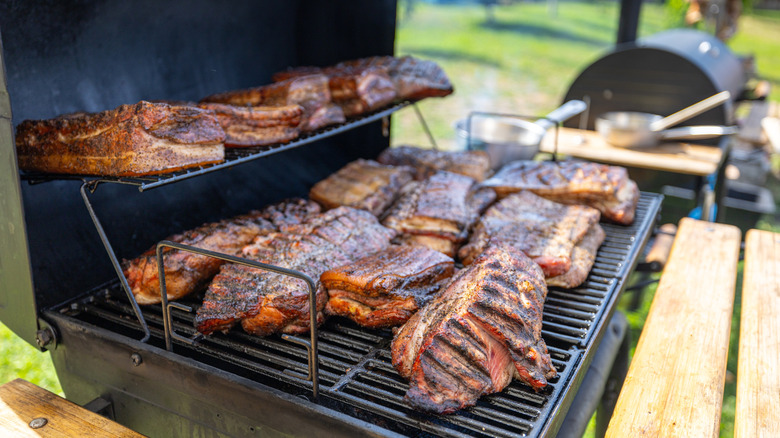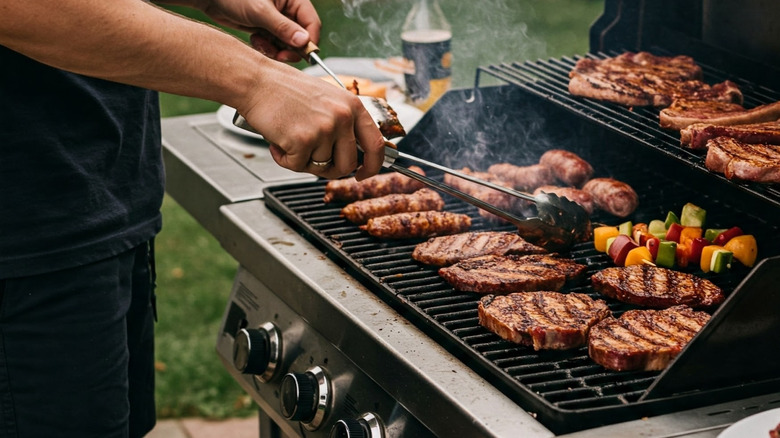The BBQ Myth That Turns Juicy Meat Into A Disaster
If you know anything about barbecue, whether you're cooking or eating it, you've likely heard one phrase time and time again: low and slow. It refers to a key principle of preparing quality barbecue, which involves cooking it over relatively low temperatures for long periods. However, like any rule of thumb, it's possible to take it too far. That's why it's vital for home cooks to avoid a common barbecue myth, which is that the slower and lower you go, the better your final product will be every time.
To understand why this myth can be so disastrous for inexperienced smokers, we should look at why many barbecue meats are cooked low and slow to begin with. Barbecue was traditionally made with cheaper, larger cuts like brisket or pork butt that can be far tougher than familiar steaks or chicken pieces. The low and slow method allows these meats to cook fully and evenly, as well as render tough pieces of meat into delightfully tender final products through the breakdown of collagen. Anything that's too lean, like chicken, won't benefit from low and slow cooking.
Still, it's important to avoid too much of a good thing for several reasons. First and foremost for many, too long on the heat can ruin both the taste and texture. Experts note that more smoke isn't always better when it comes to flavor and that each type of meat has an ideal doneness level dictated by the type of protein and nature of the cut. Beyond that level, it becomes increasingly less juicy and desirable texturally.
Perfecting the low and slow barbecue technique
The final reason to avoid too much low and slow cooking is a fairly obvious and practical one. Most recipes for barbecue take several hours to a half day to cook at a minimum, making for a far longer wait to enjoy them when compared to standard baking or even air frying. Adding even more time on top of that, while also degrading the quality of your meat, is an easy, straightforward hazard to avoid.
It's also worth noting not to overdo the "low" part of slow and low, either. Although it's vital not to overheat your smoker or grill, the meat's internal temperature needs to reach 160 degrees Fahrenheit for an extended period to break down the collagen within the tissue. This typically requires smoker temperatures in the 200 to 300 degree Fahrenheit range. Any lower, and the meat will remain tough and potentially put you and other diners at risk of illness if bacteria aren't fully killed by high enough temperatures. It's vital to use an accurate meat thermometer to ensure this temperature has been met, rather than judging by time, appearance, or feel.
Patience is a virtue. It's one of the keys that food scientists say is necessary for good barbecue. Just make sure not to overdo it on the slow and low cooking with all of your barbecue meats, or you'll risk your dream meal turning into a nightmare.

